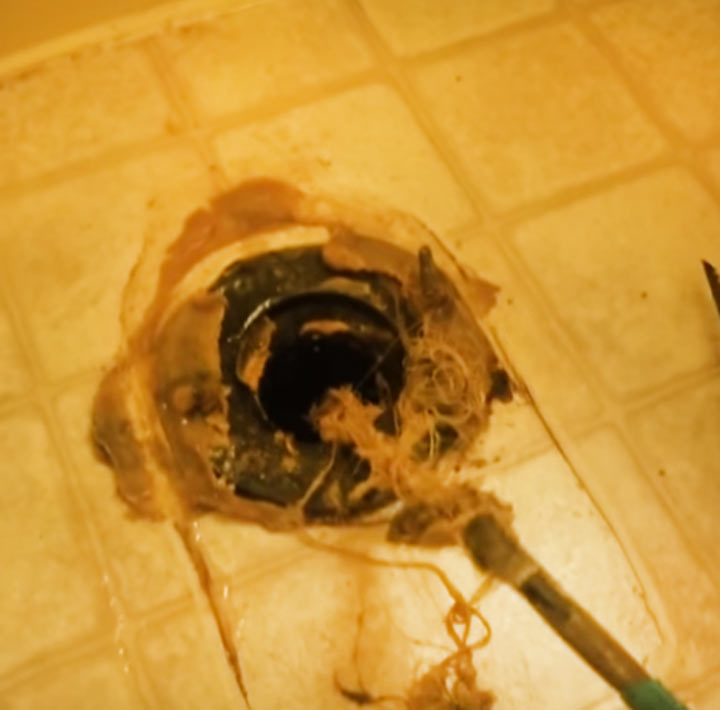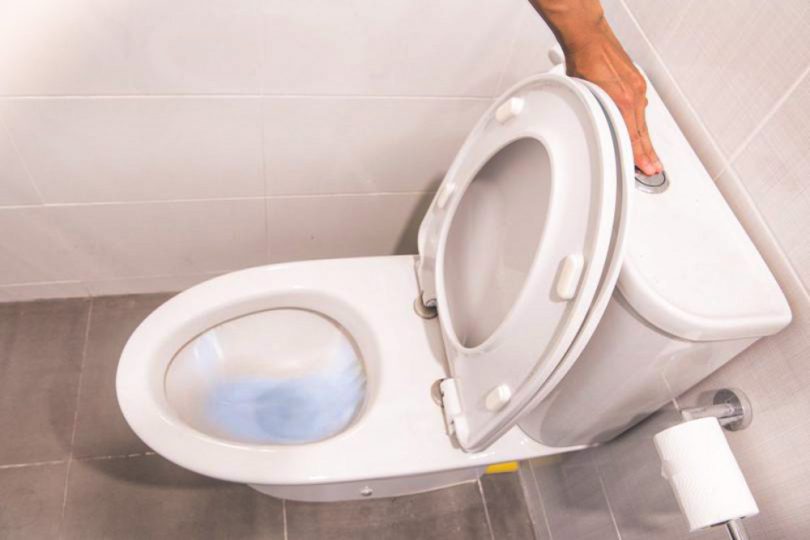Can You Flush Hair Down the Toilet?
The answer is no because hair clogs the toilet and any other drain that it goes down.
Hair clings to any rough spots or connecting points that it goes past on its way to the septic tank.
In fact, it mostly never makes it to the septic tank and doesn’t dissolve unless it is drenched in an acidic solution for clogged drains.
Does Hair Clog the Toilet?

Yes, it does and any other drain that it goes down.
Hair clings to any rough spots or connecting points that it goes past on it way to the septic tank.
In fact, it mostly never makes it to the septic tank.
Hair doesn’t dissolve unless it is drench in an acidic solution for clogged drains.
So, the answer is no you should not flush human or animal hair down the toilet.
Reasons You Should Not Do That
1. Hair does not dissolve quickly
Hair does not dissolve alone or with only cold water. It must be drenched in an acidic solution.
You can use sulfuric acid or red devil lye to dissolve hair clogs in your sewage pipes.
2. To avoid sticking on sewage pipes
When you flush your hair down the toilet it tends to stick to the drainpipes.
This could be anywhere there is a rough spot, build up on the sewage pipe walls, or where there is a connector such as an elbow or coupling located at.
3. To avoid toilet clogs
Your toilet and sewage pipes will eventually get clogged up if you flush your hair down them.
4. To avoid plumbing cost
When you flush your hair down the drainpipes it is the same as flushing your money down them. This is certain because you will eventually have to have a plumber come and fix your sewer system.
What about Short Hair?
Short hair like shaved hair or pubic hair will not create webs. So you may think it’s okay to flush them. However, they can be just as devastating as long hair, if not more.
Short hair won’t create a web like long gairs do, but even the shortest hair will stick to rough surfaces, clogging the whole pipe eventually. That’s why you should never flush hairs in the toilet.
Will A Hair Clog Eventually Unclog Itself?
Yes. Most of the things that clog the toilet dissolve into the water. They only take time to decompose themselves. So, if you can give enough time, the toilet clog will unclog itself over time as the items will dissolve and decompose. by flush pressure.
However, Some clogs can become worse. If your repetitive flushing doesn’t work, you’ll need to apply cleaning solutions, and if that too fails, you’ll need professional plumbing support.
Unclogging a Hair Clogged Toilet
Method 1: Using plungers
1. Don’t let the toilet bowl get filled up
Turn off the water supply to your toilet first.
2. Find your plunger
They have several different plungers today, such as a plunger made of plastic that works kind of like a xylophone or the black rubber coated plunger.
Many plumbers prefer the old-fashion red rubber plunger because I believe that it creates a better seal when used correctly.
3. Warm the Plunger
If your bathroom is cold you may want to warm your plunger up before using it if this is possible at the time.
You can sit it beside your heater, set it in the sunshine, let it soak in hot water, or run hot water over it.
4. Plunge Correctly
- First get the best seal between the rubber plunger and your toilet
- Then push the plunger down and back out with a vigorous type of motion that only allows the plunger to release about halfway for the first 5 or 6 pushes
- Now push the plunger all the way down and release for about two to three times
- Next suddenly plop the plunger from the seal against the toilet by pulling it straight up
- Repeat this process until the toilet releases and flushes properly.
Method 2: Hot water and detergents
1. Hot water
You might also use hot water and soap to kind of use to dissolve and soften the clog.
This alone will rarely work because by the time we realize that the toilet or drainpipe is clogging up it is too far gone to free it so easily.
2. Detergents
Pouring a detergent into the toilet can help as well.
However, red devil lye is an ingredient in most detergents and soaps, and it will cause the toilet to get hot when activated by the water inside the toilet.
Method 3: Baking soda and vinegar
You can use baking soda and vinegar to loosen the clog some too.
Baking soda makes the water slick and soft, which serves as a type of lube for your pipes.
On the other hand, vinegar is a cleaning dissolvent.
Method 4: Augers
Augers can be used as well if necessary.
Follow this guide:
Method 5: Bathroom Bomb
You can use a bathroom bomb in case of severe clogging. It will instantly dissolve the clogs. After using the bomb, flushing a couple of times will bring your toilet back to normal.
Method 6: Vacuum Valve
In case of severe toilet clogs, you can also use a vacuum valve. It will suck up the clogged materials and all the water in your toilet bowl, taking all the clogs with it.
Method 7: Wire Hanger
You can use this method when the clogging is close to the toilet pipe opening, usually the first few inches. To use this method, simply uncoil a sturdy hanger and wrap one end with a cloth. You can use duct tape so that it won’t be displaced.
Now, hold the cloth part, put the hanger into the drain, and keep pushing it in and out forcefully until the clog gets past the bend it’s stuck on. Finally, flush the toilet, and you have a clog-free toilet
Where to Dispose of the Hair?
1. Compost it
You can compost it or put it in a pile to be burned outside. Although burning hair smells bad, it is the best way to completely get rid of it.
2. Use your trash bin
You can also put it in your trash bag or bin which is the easiest way to get rid of it.
Other Things You Should Never Flush Down Your Toilet
- Thread or floss – makes the same situation as hair
- Diapers – they swell up when wet
- Pills – they swell up and become sticky when wet
- Kotex – absorbs water and becomes enlarged
- Latex condoms – do not dissolve
- Kitty litter – clumps up and becomes heavy and sticky
- Cotton swabs – too long and may get lodged sideways.
- Insulin syringes – the same as cotton swabs and they will not dissolve. They also get tangled up in the hair clogs and make a huge blockage.
- Ducts from your cigarettes- do not dissolve easily
- Grease – does not dissolve with out hot water and a degreaser
- Vaseline – needs hot water and degreaser to remove it from your sewage pipe walls
- Baby wipes– takes a long time to dissolve
- Candies or chewing gum – sticky mess on the pipe walls
- Towelettes – do not dissolve
- Large amounts of undigested foods – contains grease that has not been broken down yet.
- Too Much Toilet Paper – can clog small pipes. They are also difficult to flush.
- Bandage – Bandages are not biodegradable as they are mostly made of plastics. (even the ones made from cloth should go in the trash, not the toilet)
- Feminine Products – Tampons, and sanitary pads can swel up absorbing liquid and can block pipes, creating complications in the sewer or the septic system
FAQs
Q. 1: Can bleach be used to unclog my toilet?
Ans. Yes, you can use bleach to loosen your clog if you have not used any other solution recently that it might counter act with such as ammonia. Since ammonia acids are found in your urine make sure that you close the lid to keep the fumes that the mixture could cause. However, it is not the best choice to use and is not recommended.
Q. 2: Does hair really dissolve in water?
Ans. Not at all. Hair is a solid form and will remain as such if not melted by acid or heat it would take some extremely hot water to melt your hair.
Q. 3: What happens to the hair that goes down the drain?
Ans. Well, it either eventually washes through your pipes and into your septic tank where enzymes and bacteria deuterates it or it causes clogs in your sewer pipes.








Leave a Comment